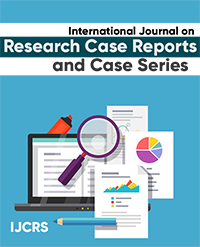Pharmaco-physio-psychologic Effects of Lavender Oil on our Body
Nahla Shaaban Khalil*
Assistant professor, Critical care and Emergency Nursing, Cairo University, Egypt
*Corresponding author: Nahla Shaaban Khalil, Assistant professor, Critical care and Emergency Nursing, Cairo University, Egypt
Article History
Received: February 04, 2020 Accepted: February 04, 2021 Published: February 04, 2021
Citation: Khalil NS. Pharmaco-physio-psychologic Effects of Lavender Oil on our Body. Int J. Res. Case Rept & Case Sers. 2021;1(1):01‒02. DOI: 10.51626/ijcrs.2021.01.00001
Opinion
Lavender is volatile aromatic oil. It has been used for a long time in traditional medicine. The essence of Lavender is obtained through distilling after boiling flowered twigs and leaves. The pharmacological uses of Lavender include its use as an analgesic, sedative, narcotic, anti-inflammatory, and anti-depressant. Moreover, it stimulates blood circulation and used in healing of burns and insect bites [1]. Lavender (Lavandula officinalis Chaix.) belonging to the family of Lamiaceae, is a flavor herb of the garden. It contains camphor, terpinen-4-ol, linalool, linalyl acetate, beta-ocimene and 1,8-cineole. These components vary in concentration and curative effects with the different species. Linalool and linalyl acetate have great absorbing properties from skin during massage causing a depression of central nervous system. Linalool shows sedative effects and linalyl acetate shows marked narcotic actions. These two effects may be responsible for its use in reducing anxiety in patients with sleep disturbance pattern [2].
Lavender oil may affect the endocrine and autonomic nervous system. So, the chemical components explain its healing abilities, it is composed of esters and monoterpenes. Esters are oxygenated compounds that have the following actions; anti-spasmodic, anti-fungal, anti-inflammatory as well as a tonic of nervous system. Moreover, Lavender oil contain β-caryophllene which is being anti septic, anti-bacterial and have calming effect [3].
Most of previous studies stated that the action mechanism of aromatherapy on reducing pain is not clear yet but some scientists explained its action has some effects like benzodiazepines, which increase the gamma amniotic effects that in turn generate some sedative and tranquilizing outcomes. The oil essence is absorbed through inhalation which could affect some enzymes and ionic channels, with multiple gamma amino butyric effects that end in brain stimulation, anxiety decrement, anti-depressive effects and increased blood circulation in the brain. The oils could pass the blood-brain barrier and interact with the central nervous system receptors [4].
The effects of Lavender oils on 5-HT pathway via olfaction analyzed as the molecules of inhaled essential oils transmit their signals via olfaction and stimulate the brain to produce 5-HT. The 5-HT-induced pathway is important in mood regulation (depression, anxiety, etc.). 5-HT I synthesized from tryptophan. This is catalyzed by tryptophan hydroxylase. It is restored in the vesicles in the presynaptic neuron and, once stimulated by nerve impulse. [5].
In addition, Sobhani and colleagues, 2010 reported that, the linalyl acetate, a component of Lavender, decreased the administered levels of pharmacological painkillers drugs. Moreover, Alavi, 2010 also proposed that Lavender prevented an increase in the levels of perceived pain during first-time deliveries in women. Pharmacological studies of the effects of essential oils and/or their chemical constituents had also been shown both in vitro and in vivo that Linalool, a major component of lavender inhibit glutamate binding, and might function as tranquilizer [6].
Lavender essence was also reported as a successful and safe complementary therapy in reduction of pain after the cesarean section in 200 term pregnant women and after episiotomy in 60 primiparous women as well as in perineal discomfort following normal childbirth in 635 women It has been shown that lavender aromatherapy through an oxygen face mask with two drops of lavender oil can be used to reduce the demand for opioids in twenty-five patients after immediate postoperative period of breast biopsy surgery and for other analgesics in fifty-four patients undergoing laparoscopic adjustable gastric banding In contrast to these observations [7].
On the same line, inhalation of lavender essential oil is suggested to be an effective and safe therapy in acute management of migraine headaches and associated symptoms after fifteen minutes inhalation of lavender in the early stages of the attacks. Similarly, massage with lavender accompanied with rose geranium, rose, and jasmine in almond and primrose oils once a week for 8 weeks is reported as an effective treatment of menopausal symptoms such as hot flushes, depression, and pain in climacteric women [8,9].
References
- Sebai H (2013) Lavender (Lavandula stoechas L.) essential oils attenuate hyperglycemia and protect against oxidative stress in alloxan-induced diabetic rats. Lipids Health Dis 12(1): 189.
- Shahnazi M, Nikjoo R, Yavarikia P, Mohammad-Alizadeh-Charandabi S (2012) Inhaled Lavender effect on anxiety and pain caused from intrauterine device insertion. J Caring Sci 1: 255-261.
- Alexpoulose A, Kimbaris AC, Plessas S, Mantzourani L, Theodorridoul, et al., (2011) Anti-bacterial effect of essential oils from Eight Greek aromatic plans against clinical isolates of staphylococcus aureus, Journal of obstetrics and gynecology 115(3): 2-8.
- De Rapper S (2013) The In Vitro Antimicrobial Activity of Lavandula angustifolia Essential Oil Combination with Other Aroma-Therapeutic Oils. Evid Based Complement Alternat Med; 2013:852049.
- Clara DBG (2011) Actions of essential oils on the central nervous system: An updated review. Flavor and Fragrance Journal.
- Chien LW, Cheng SL, Liu CF, (2012). The effect of lavender aromatherapy on autonomic nervous system in midlife women with insomnia. Evid Based Complement Alternate Med.
- Sheikhan F. Jahdi EM Khoei (2012) Episiotomy pain relief: use of Lavender oil essence in primiparous Iranian women. Complementary Therapies in Clinical Practice (18)1: 66–70.
- P Sasannejad, M Saeedi, A Shoeibi (2012) Lavender essential oil in the treatment of migraine headache: a placebo-controlled clinical trial. European Journal of Neurology67(5): 288-291.
- Sobhani AH, Orang Pur R, Shokohi F, Ooi M (2010) Effect of levander on post cesarean pain. J Guilan Univ Med Sci 16: 80-86.

